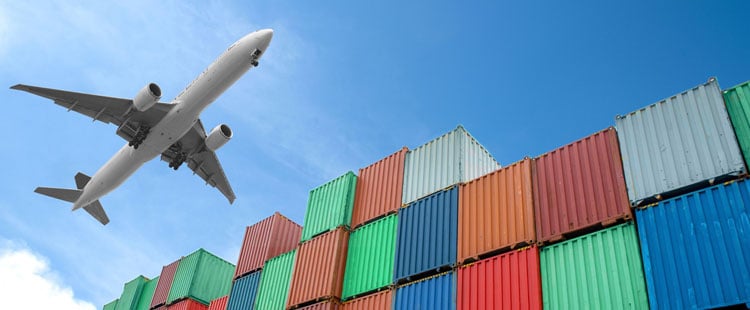
Speed to market is a necessity today, but how do you balance these pressures with shipping costs?
There was a time when excess inventory was considered a good thing. Whether you were storing raw materials like coal or warehouses full of computer parts, these excess items were considered assets.
However, following the rise of practices like lean manufacturing and “just-in-time inventory,” warehousing excess materials is now considered by many companies as wasteful and inefficient.
This trend stems from a belief in passing value to the customer through efficiency. By reducing the amount of resources necessary to make a product, you can sell it for less without hurting your margin. This gives you a competitive advantage in highly commodified spaces where price is the largest consideration.
In pursuit of lean manufacturing, the burden of efficiency has been extended to importers.
Any lag time is a loss, putting importers at risk of the price volatility inherent to international shipping. But speed isn’t cheap. Striking a balance between cost and value is a never-ending challenge for importers. Luckily, there are proven ways to get closer to finding that balance.
Air Or Ocean Freight
The decision to ship your freight by air or over ocean will impact cost as well as your speed-to-market.

Air is more expensive because it’s much faster to import goods by plane, but the cost may be a barrier for many importers, which is why there’s still a lot of demand for full container and LCL (less than container load) ocean freight.
With this option, the money you save could end up nullified by bad weather or labor strikes. A plane that’s diverted to a different airport is an easier crisis to solve than having your cargo stranded offshore for three weeks waiting for a strike to resolve.
Because so many variables factor into the cost of international shipping, it’s almost impossible to predict price volatility. For example, you could be a shoe retailer and midway through the busy season an extra tax is applied to your country of origin. Suddenly, you’re paying an extra $50 for shoes that might retail for $75. You, as the importer, end up eating that cost.
Shipping by ocean extends the window you’re exposed to potential volatility. It’s not unusual to see ocean transit times of 30 days or more. A lot can happen in 30 days—strikes, tropical storms, earthquakes that cause tsunamis that wipe out a port. These are risks you have to weigh in your decision making.
Is lean manufacturing, for all its benefits, the right fit for you if you’re budget prohibits investing in shipping by air?
Another thing to think about is the type of product you’re importing. What is the shelf life? How critical is it for your product to arrive on time? What are the secondary and tertiary consequences of breakdowns in your supply chain? If timeliness is highly important to your company, then speed will be the primary consideration.
Some larger companies are able to find balance between the two by implementing PO management programs at the point of origin. This allows them to decide whether to ship a product by air or ocean based on nearly real-time variables. Unfortunately, many smaller importers are stuck trying to predict future conditions and make the best decision they can.
It’s important to have a contingency plan in place regardless of which direction you take with your shipping. There will be hiccups. Hopefully, knowing what those can entail will be enough to help you make a savvy decision.
Warehousing Your Cargo
No one can really predict the future of shipping, and contingency plans are only good in times of crisis—the more you can avoid relying on them altogether, the better off you will be.
Another variable to add to your equation is warehousing your goods. This is especially relevant to products with a short shelf-life, like perishable items and certain raw materials.

As with many trends, lean manufacturing is attractive but not always applicable. It’s important to reflect on whether you’re an importer that actually benefits from just-in-time inventory or if it just adds pressure and cost to your supply chain.
Simply put, is the cost of warehousing less expensive than your product being late or understocked?
Strategic Sourcing From Multiple Carriers
After you have been using a supplier for a few quarters, it’s natural to start focusing on strengthening that relationship.
You might have visited their factory sites. Maybe you installed proprietary equipment at their facility or received financial incentives from their government.
Given the volatility of international trade, you have to weigh these positives against the one important negative: does working with a single country expose your business to massive loss if a new trade policy emerges without warning?
Unfortunately, it’s difficult to shift trade lanes quickly once you’ve settled on one.
If you work with a freight forwarder that has a seasoned route development staff, then you can offset that risk. Route development staff build relationships with your customers and suppliers. They travel around the globe keeping up on the details of the importer’s business.
This is essential to staying ahead of international shifts in trade. It also allows you to leverage multiple trade routes without having to develop net-new relationships with manufacturers in unaffected countries.
It’s a critical decision whether you choose a shipping method based on price or speed. By selecting a strategic freight forwarder who brings holistic value to your process rather than merely the lowest price, you stand the best chance of minimizing loss incurred by trade volatility.


